St Adamnan’s Church and Groudle Glen #OscarWalks
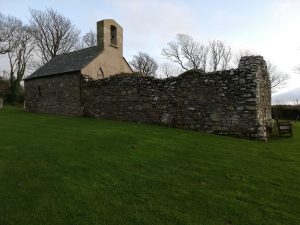
There was a slight delay in the opening post of Oscar’s weekly adventures, because of the sad loss of Joey. We’ve all been struggling a bit with this, but Oscar and I agree that it’s time to get back into action again. Joey was very enthusiastic about the new series, and gave us some excellent suggestions in the weeks before he died. According to Oscar, he is still getting excellent suggestions from both Joey and Toby, many of which seem to involve stealing food from kitchen surfaces and trying to get books down off my shelves. I’m not sure about this. Either Oscar is a Medium and is receiving messages from the doggie spirit world or he thinks he can blame his crimes onto his departed brothers. Could be either, really.
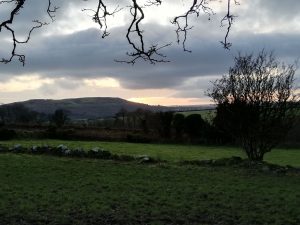
Anyway, we did these two walks a few weeks back. Oscar loves Groudle Glen and beach and I wanted to walk up to St Adamnan’s Church and take a few photos since both these locations featured in my Christmas story, Colby Fair. We’d had five days of rain and then unexpectedly, after lunch, the sun came out and it was a beautiful, cold afternoon when we parked and set off up a narrow road towards the church.
”Where are we going, Mum?”
“We’re visiting a church, Oscar.”
“What’s a church?”
“It’s a building where people go to pray.”
“Do dogs pray?”
“I don’t know, Oscar. You’d have to ask some other dogs.”
“I’ll ask Joey. And Toby. Toby must know this stuff. He knows a lot more than he did when he was alive.”
“It would be hard for him to know less. Stop pulling, Oscar.”
“Sorry. What’s that smell? And that one? And that one and…what’s that?”
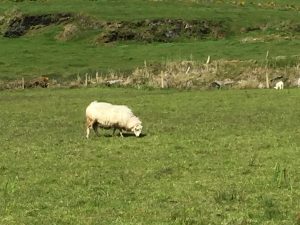
“It’s a sheep. Don’t worry it.”
“It’s enormous. It’s worrying me.”
“You’re not like Joey, I must say, he’d have been trying to get over that gate to visit the sheep.”
“I always knew Joey was brave. I’m not going near that thing. What’s that?”
“It’s the church.”
“It’s broken.”
“It’s partly ruined, Oscar. Come and have a look round.”
There has been a church on this site since the middle of the fifth century, and it was probably a centre of pagan worship before that. The first church or keeill was built by travelling monks on a main pack horse road between Douglas and the north. There was a well with running water and it was close to two good landing beaches. The church was rebuilt a number of times and remained the parish church until 1733 when parishioners complained that the location was inconvenient, and it was decided to build a new parish church in a more central position.
After the new church was built, which took almost 100 years, St Adamnan’s fell into disrepair, but fortunately was not demolished. It was rediscovered when John Quine became Vicar of Lonan in 1895 and he set out to restore the ancient building.
“Why doesn’t this half have a roof?”
“It’s a ruin. This is the old part of the church. The other part was restored later on, it’s still a church.”
“With a roof.”
“That’s right.”
“Can we go in?”
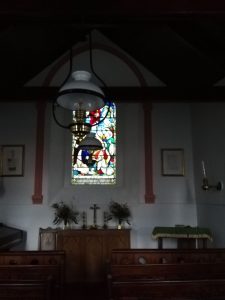 “If you promise to be very good. I’d like to take some photos.”
“If you promise to be very good. I’d like to take some photos.”
“Of me?”
“Not this time, Oscar.”
“Good. I HATE posing for photos when I’m out, I don’t like standing still.”
“I can see that.”
“Mum. Bored now.”
“All right. Let’s have a quick look round the churchyard and then we’ll drive down to Groudle. There are some Celtic Crosses here.”
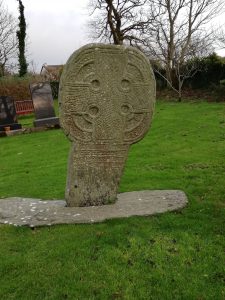
“Boring. Can we walk to Groudle?”
“We could, but we’re going in the car.”
“Boring.”
“Because it will be dark soon, and you don’t like walking when it’s very dark.”
“Who does? It’s full of shadows and weird shapes and those big woolly things.”
“Sheep, Oscar.”
“That’s ‘em. Don’t trust ‘em.”
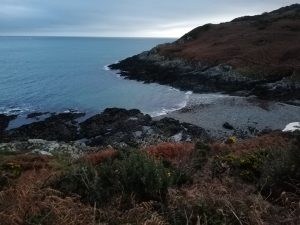 Groudle Glen is close to Onchan and is formed in a valley leading down to a small beach. It was developed as a tourist attraction in the nineteenth century when it was planted with a variety of trees. In its Victorian heyday there were bowling and croquet greens, a holiday camp on the headland and a water wheel. The wheel was still visible until very recently, when it was removed for restoration. There was a refreshment kiosk, a bandstand and at the edge of the glen, a small zoo featuring sea lions and polar bears, created by damming a small cove. This was reached by a narrow gauge steam railway, which still exists today and is run by a dedicated team of volunteers.
Groudle Glen is close to Onchan and is formed in a valley leading down to a small beach. It was developed as a tourist attraction in the nineteenth century when it was planted with a variety of trees. In its Victorian heyday there were bowling and croquet greens, a holiday camp on the headland and a water wheel. The wheel was still visible until very recently, when it was removed for restoration. There was a refreshment kiosk, a bandstand and at the edge of the glen, a small zoo featuring sea lions and polar bears, created by damming a small cove. This was reached by a narrow gauge steam railway, which still exists today and is run by a dedicated team of volunteers.
The glen was a major tourist attraction in Victorian times, with a dance floor, a bandstand, a playground, stalls, kiosks and even a fortune teller. Most of these have now disappeared apart from the railway, and the glen today consists of peaceful footpaths which are much frequented by dog walkers.
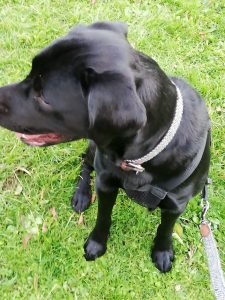 “DOOOOOOOGS! I love coming down here. There are smells and water and a beach and trees and paths and mud and other DOOOOOGS!”
“DOOOOOOOGS! I love coming down here. There are smells and water and a beach and trees and paths and mud and other DOOOOOGS!”
“Calm down, Oscar. You’re supposed to be giving our readers a description of the glen and the beach from a Labrador’s point of view.”
“I am. DOOOOOOGS! TREEEEES! All the SMEEELLLLLS! And no sheep. I hate sheep.”
“I know, Oscar. Some dogs chase sheep, you know.”
“Not me. I hide when I see sheep.”
“I know. Behind me. Last week you nearly tripped me up by wrapping the lead round my legs when you saw a sheep. It was half a mile away on the other side of a fence.”
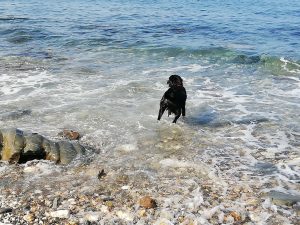 “It looked at me funny. OMG it’s the SEEEEAAA!!! Swimming! Throw the ball, Mum! Further than that! Aren’t you coming in, it’s great!!!”
“It looked at me funny. OMG it’s the SEEEEAAA!!! Swimming! Throw the ball, Mum! Further than that! Aren’t you coming in, it’s great!!!”
“Maybe in the summer, Oscar.”
“Do sheep swim?”
“Not willingly.”
“Good. That’s why I love the sea.”
“Come on, Oscar, I want to walk up the path to the railway track before it’s dark to take a photo. You could do with a run to dry off a bit.”
“I don’t need to dry. I’m a Labrador, we like water. I can run round like this all day.”
“Good boy.”
“Mum…I’m cold.”
“Back to the car then, Oscar. I’ve got your towel there. Was that a good walk?”
“Great. Where next?”
“We’ll have to wait and see.”
“Tired now…”
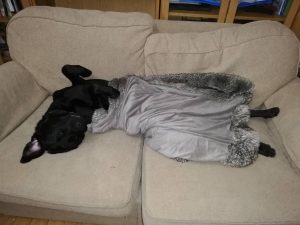
Look out for more #OscarWalks posts to come and if you enjoyed this and want to hear more from Writing with Labradors, why not follow me on Facebook, Twitter, Instagram or Medium?

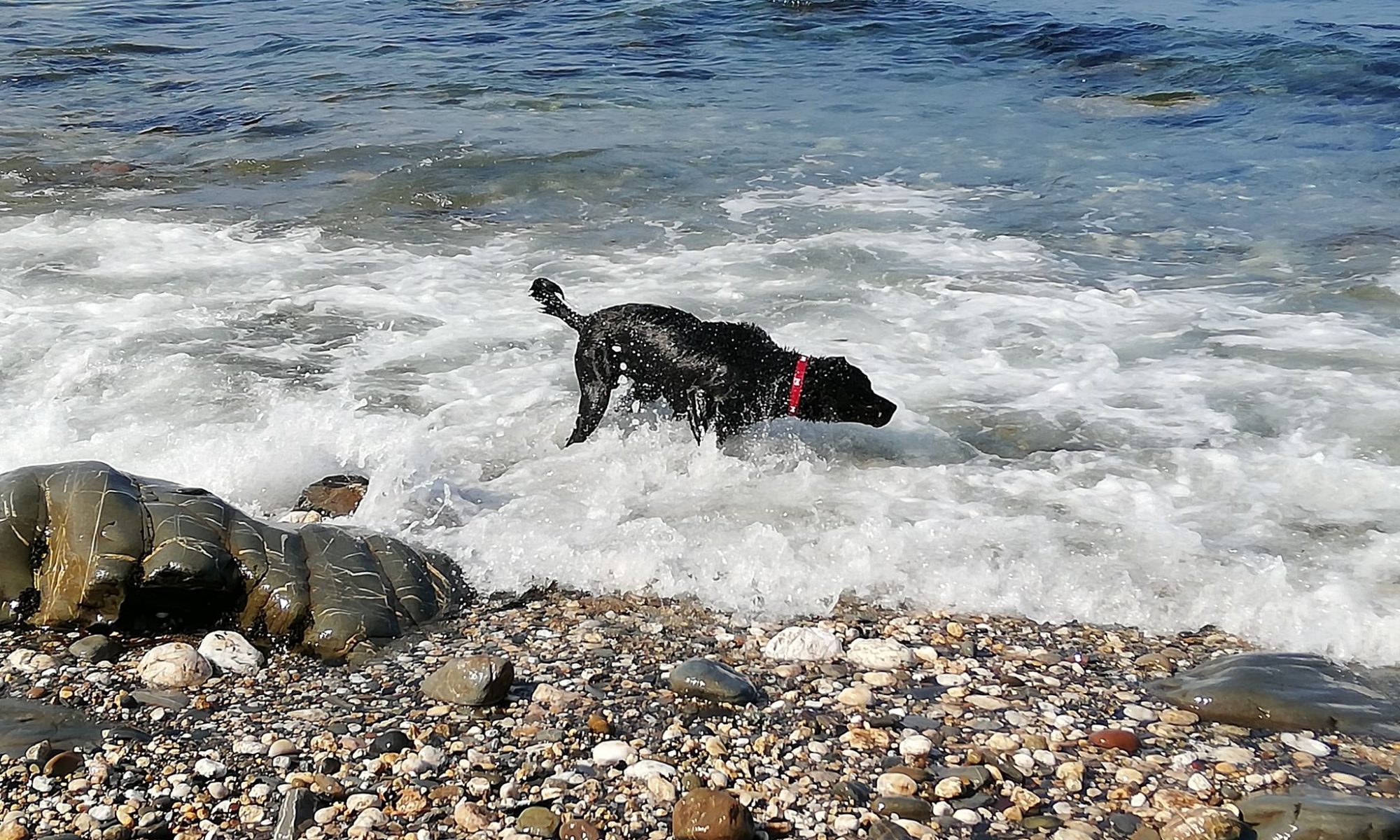
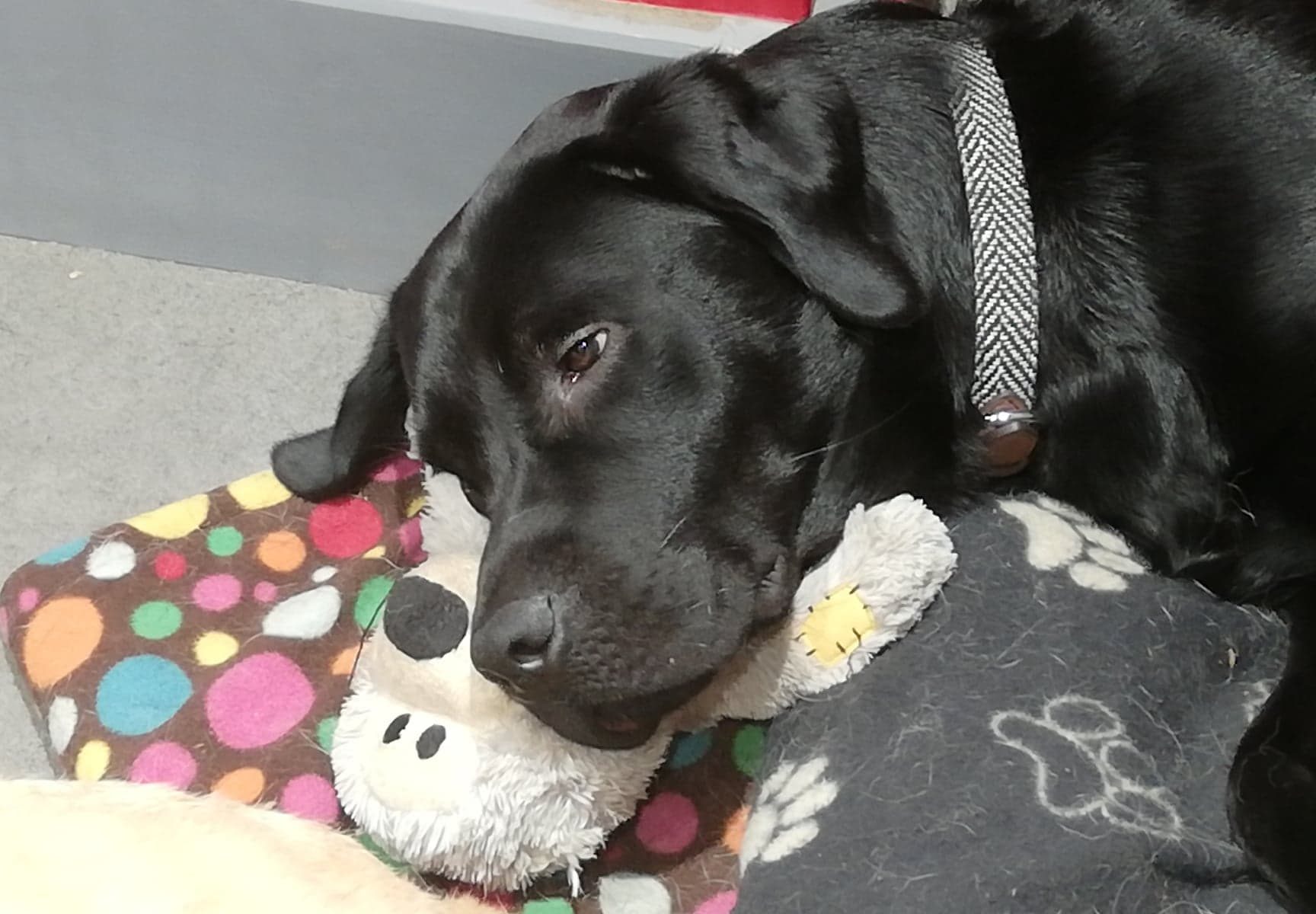
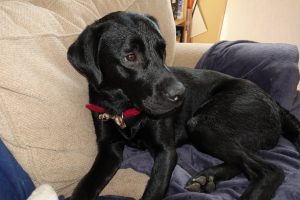
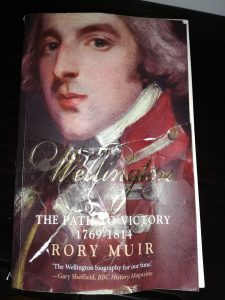
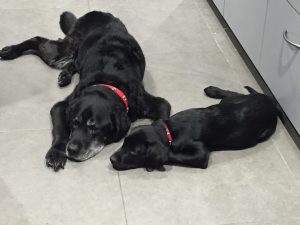
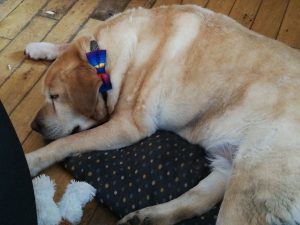
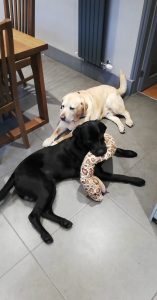
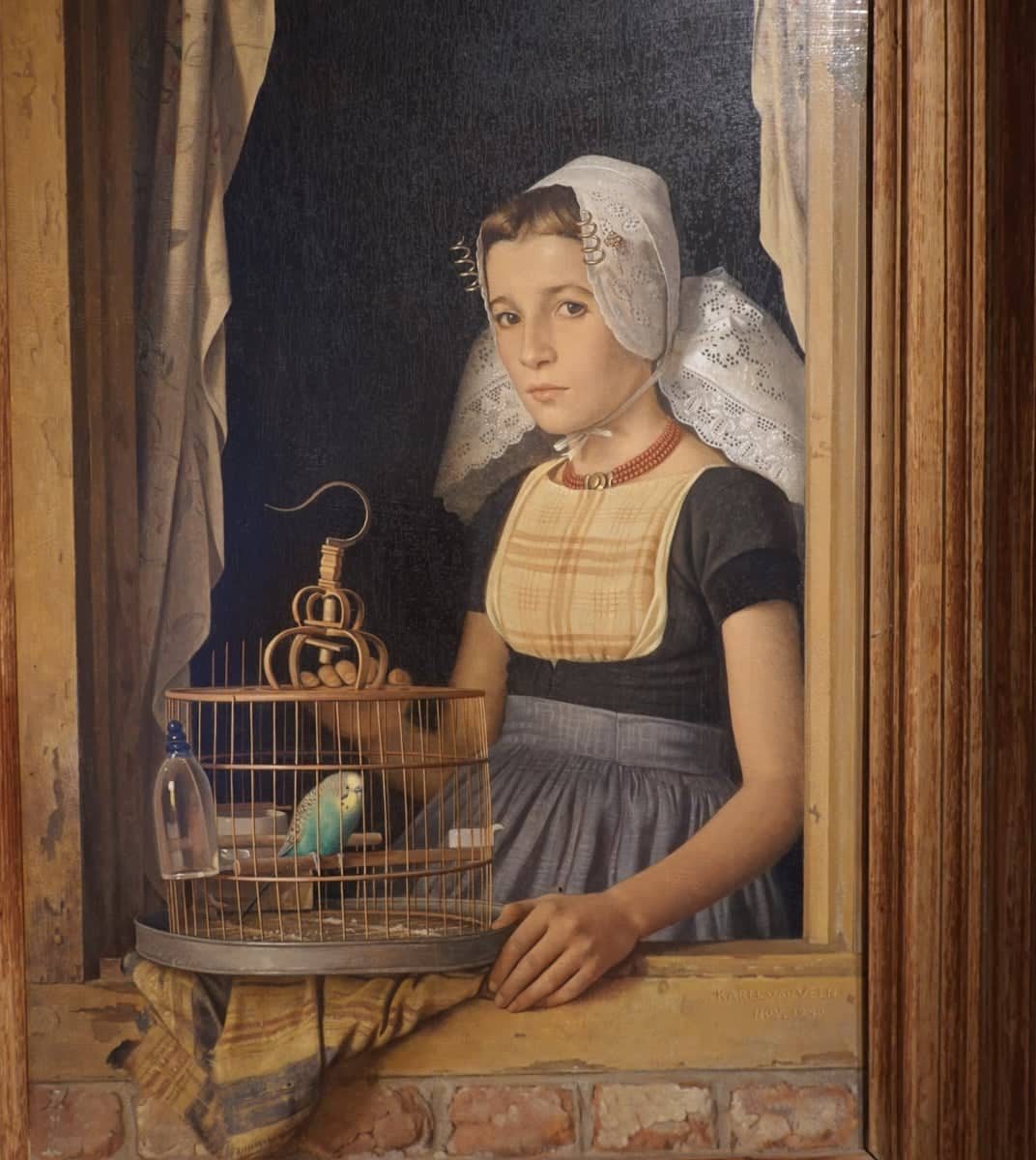
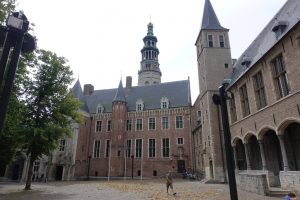 Middelburg Abbey originated in the twelfth century. Monks from Antwerp established a large religious foundation with two churches and extensive lands on Walcheren and in other parts of Zeeland. Many of the surviving buildings from the monastic period are Medieval Gothic, and date from the late sixteenth century.
Middelburg Abbey originated in the twelfth century. Monks from Antwerp established a large religious foundation with two churches and extensive lands on Walcheren and in other parts of Zeeland. Many of the surviving buildings from the monastic period are Medieval Gothic, and date from the late sixteenth century.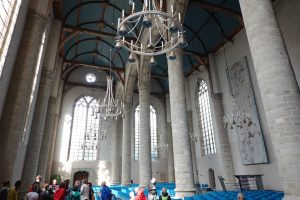 The New church features a double nave and dates from the rebuilding that followed the fire of 1558. It replaced an earlier church built around 1300 which also featured a twin nave. The eastern wall of the New church is also the western wall of the Choir church, and the two interiors were originally connected through an arch, but this was subsequently blocked up. After 1833 the New church became the only parish church for the central walled area of Middelburg.
The New church features a double nave and dates from the rebuilding that followed the fire of 1558. It replaced an earlier church built around 1300 which also featured a twin nave. The eastern wall of the New church is also the western wall of the Choir church, and the two interiors were originally connected through an arch, but this was subsequently blocked up. After 1833 the New church became the only parish church for the central walled area of Middelburg.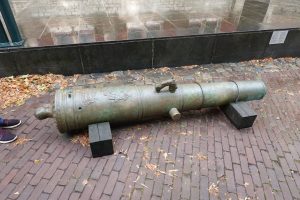 There is a big, open square in the middle of the Abbey buildings, with trees and seats and a couple of cannon which look rather as though they had been carelessly abandoned by some negligent commissary officer. There is also the entrance to the museum and cafe.
There is a big, open square in the middle of the Abbey buildings, with trees and seats and a couple of cannon which look rather as though they had been carelessly abandoned by some negligent commissary officer. There is also the entrance to the museum and cafe.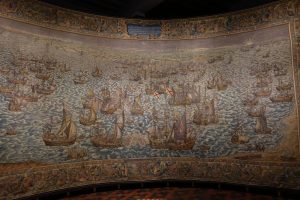 This part of the building has been thoroughly modernised inside, giving little sense of the original abbey. The museum has exhibitions over a number of floors. It is very well designed and put together with very modern themes, but I will be honest and admit that I was a little disappointed. While I wasn’t expecting to find anything about the campaign of 1809 which was not especially significant in Dutch history, apart from the people who died in Vlissingen and Veere, I was very much hoping for some information about the history of Middelburg and Walcheren and that was very much lacking. The one exhibition which dealt with history, was an amazing selection of tapestries telling the story of the rebellion against Spain. I loved that section. Much of the rest of the museum was beautifully put together but gave very little actual information about the town or its history. Given that there is no other museum in Middelburg to do that job, I thought it a shame, although I did pick up some useful information about historic costume.
This part of the building has been thoroughly modernised inside, giving little sense of the original abbey. The museum has exhibitions over a number of floors. It is very well designed and put together with very modern themes, but I will be honest and admit that I was a little disappointed. While I wasn’t expecting to find anything about the campaign of 1809 which was not especially significant in Dutch history, apart from the people who died in Vlissingen and Veere, I was very much hoping for some information about the history of Middelburg and Walcheren and that was very much lacking. The one exhibition which dealt with history, was an amazing selection of tapestries telling the story of the rebellion against Spain. I loved that section. Much of the rest of the museum was beautifully put together but gave very little actual information about the town or its history. Given that there is no other museum in Middelburg to do that job, I thought it a shame, although I did pick up some useful information about historic costume.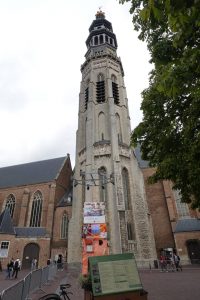 We climbed Lange Jan to see the fabulous views over the town, following in the footsteps of my fictional Lieutenant Durrell who found it a quiet haven away from the chaos of the campaign in 1809. After coffee and cake outside a local cafe, dodging another rain shower, we went back to Veere to the two museums there. The Veere Museums consist of the City Hall and the Scottish Houses on the quay, both fabulous historic buildings.
We climbed Lange Jan to see the fabulous views over the town, following in the footsteps of my fictional Lieutenant Durrell who found it a quiet haven away from the chaos of the campaign in 1809. After coffee and cake outside a local cafe, dodging another rain shower, we went back to Veere to the two museums there. The Veere Museums consist of the City Hall and the Scottish Houses on the quay, both fabulous historic buildings.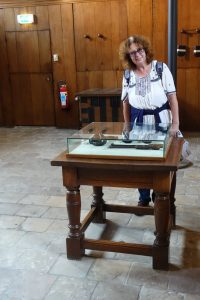 The museums in Veere were far more interesting in terms of history, although I have to say that there was still more art than history in both of them. I really enjoy art, and I loved the story of the English family who set up an artists’ community in Veere before the second world war. I still felt a slight sense of frustration, however. These towns have so much history and I came away knowing very little about the people, the development of the town, their economy and agriculture and what shaped them. Perhaps there’s a museum somewhere else in this area that I’ve not found which offers that.
The museums in Veere were far more interesting in terms of history, although I have to say that there was still more art than history in both of them. I really enjoy art, and I loved the story of the English family who set up an artists’ community in Veere before the second world war. I still felt a slight sense of frustration, however. These towns have so much history and I came away knowing very little about the people, the development of the town, their economy and agriculture and what shaped them. Perhaps there’s a museum somewhere else in this area that I’ve not found which offers that.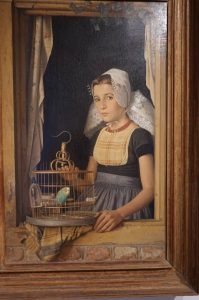 Having said that, I had a fabulous day. The museums were great at what they did, even if it wasn’t what I wanted, and I thoroughly enjoyed myself. I also found, in a rather more modern painting of a woman in traditional Dutch costume, my perfect Katja de Groot. Honestly, I couldn’t stop staring at her. Isn’t she beautiful?
Having said that, I had a fabulous day. The museums were great at what they did, even if it wasn’t what I wanted, and I thoroughly enjoyed myself. I also found, in a rather more modern painting of a woman in traditional Dutch costume, my perfect Katja de Groot. Honestly, I couldn’t stop staring at her. Isn’t she beautiful?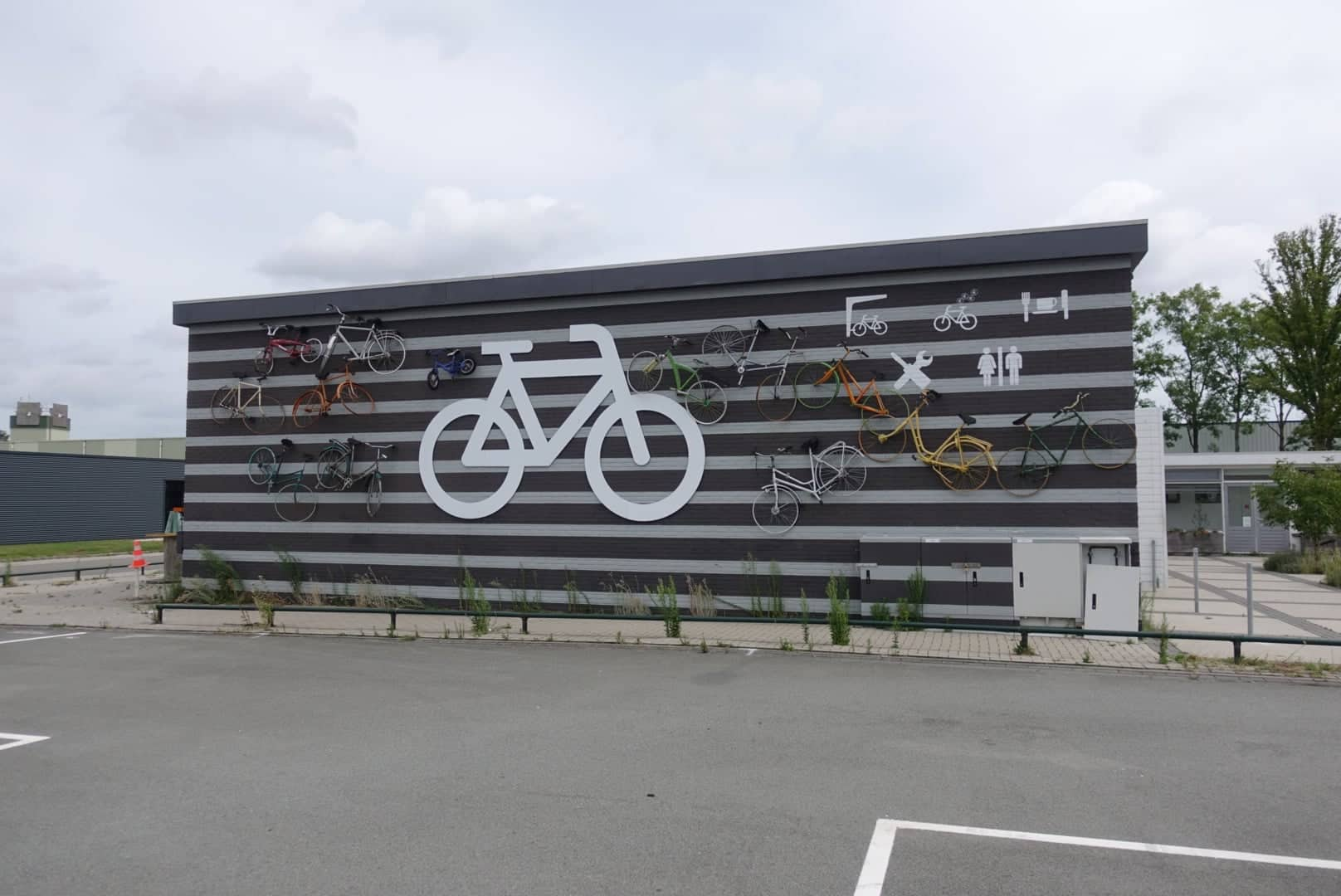
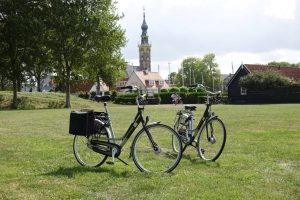 Our Walcheren Expedition, day 2, could be sub-titled “What I learned about cycling.”
Our Walcheren Expedition, day 2, could be sub-titled “What I learned about cycling.”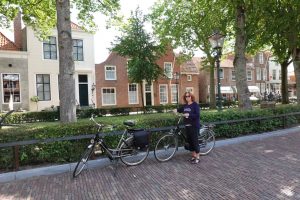
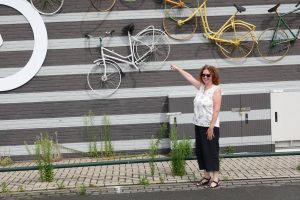 Perhaps it’s time to venture off the prom and try a few gentle hills at home…
Perhaps it’s time to venture off the prom and try a few gentle hills at home…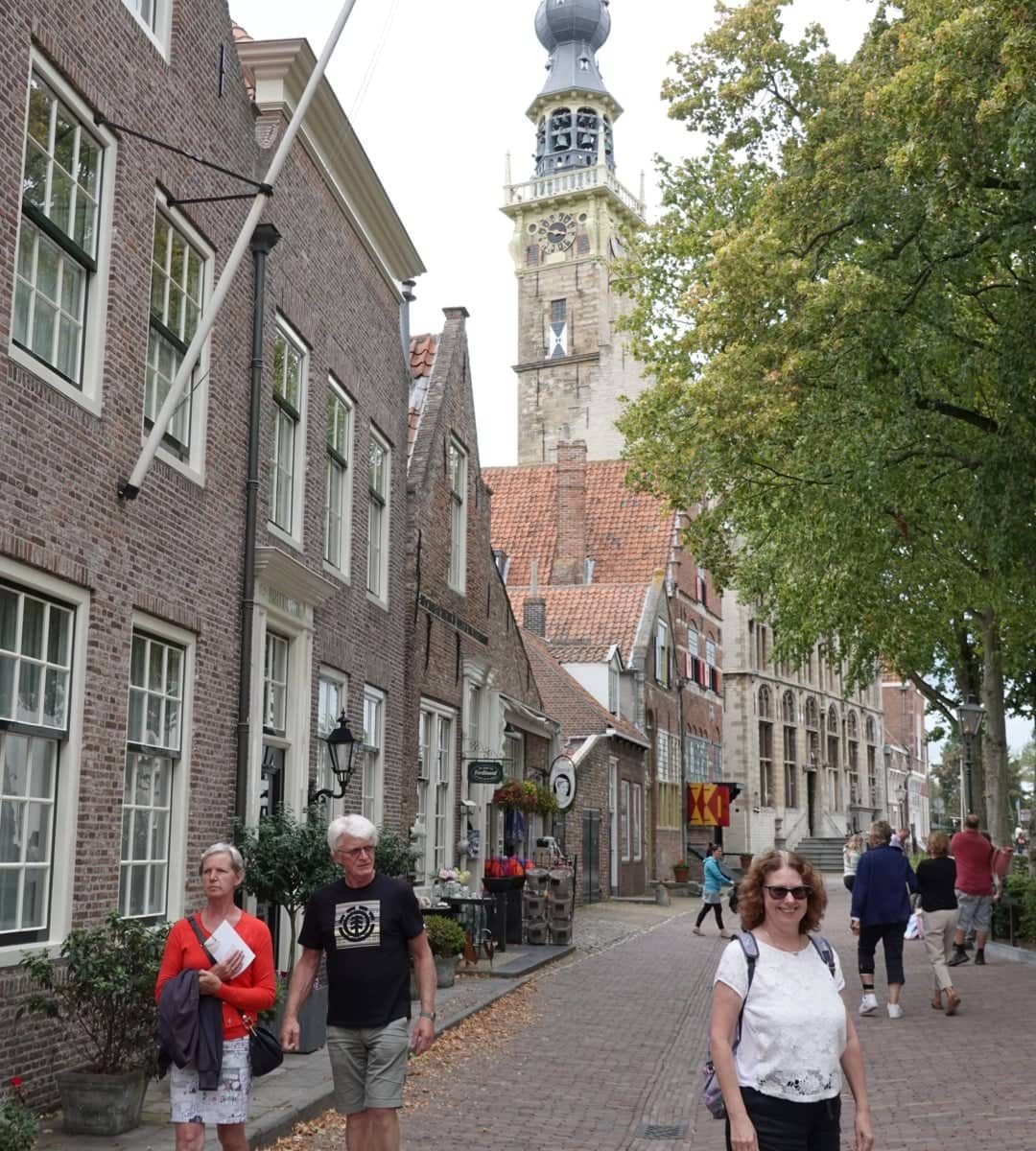
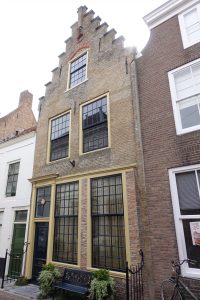 Given that, we were very fortunate to find an apartment, through Airbnb, on Korendijk, which is directly on the canal and is where my Dutch heroine, Katja de Groot, was living with her three children when the British invaded in 1809. Much to my joy,
Given that, we were very fortunate to find an apartment, through Airbnb, on Korendijk, which is directly on the canal and is where my Dutch heroine, Katja de Groot, was living with her three children when the British invaded in 1809. Much to my joy, 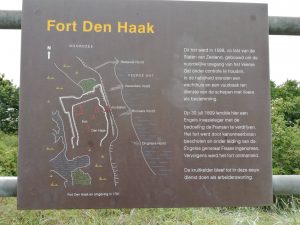 All the same, the wide beaches and strong winds definitely give a good sense of what Chatham’s men faced when they landed on Walcheren. We even managed to find the location of Fort Den Haak, where
All the same, the wide beaches and strong winds definitely give a good sense of what Chatham’s men faced when they landed on Walcheren. We even managed to find the location of Fort Den Haak, where  Following General Fraser’s trail, we drove to Veere, which is a beautiful little town which refused to surrender immediately to Lord Chatham’s army and was battered from both land and sea to persuade it to do so. There is a walk around the fortifications of Veere which we did, and it gives a good sense of the town defences, although most of what exists today was built from 1810 onwards when the French returned, including a fine selection of artillery from 1810 and 1811. We’ll be back to do the museums another day.
Following General Fraser’s trail, we drove to Veere, which is a beautiful little town which refused to surrender immediately to Lord Chatham’s army and was battered from both land and sea to persuade it to do so. There is a walk around the fortifications of Veere which we did, and it gives a good sense of the town defences, although most of what exists today was built from 1810 onwards when the French returned, including a fine selection of artillery from 1810 and 1811. We’ll be back to do the museums another day.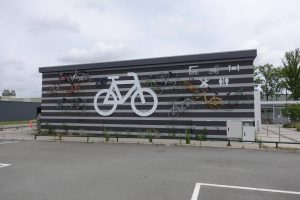
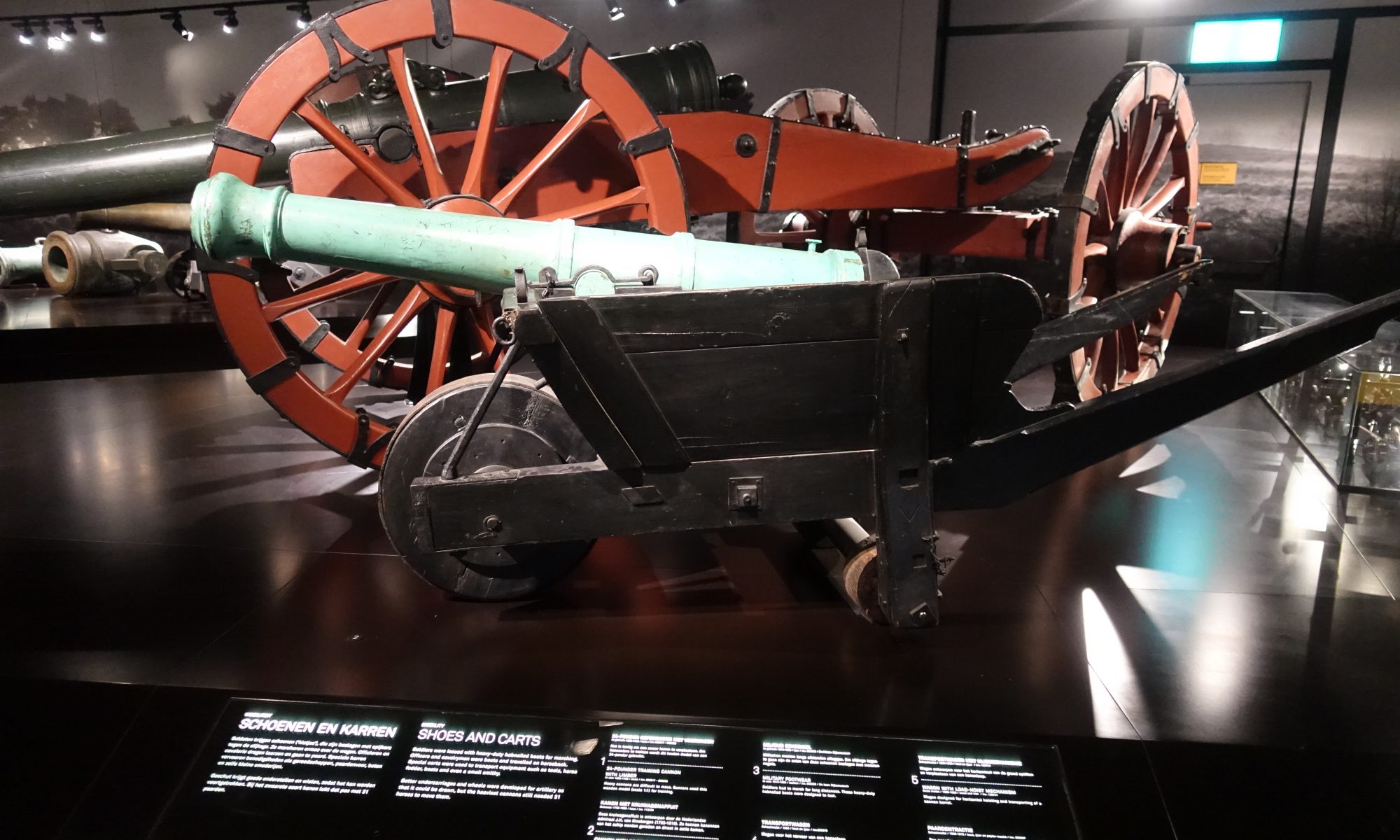
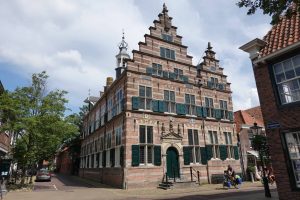 Our Walcheren Expedition: Preview took us to Naarden. We travelled to Walcheren via Amsterdam, which gave us the opportunity to spend a couple of days visiting some friends who live in Naarden. I’d not been there before, and given that most of this trip is about Me Me Me, I had already decided to let everybody else plan these few days. It says a lot about my friends that day one was spent exploring the seventeenth century star fortress and day two was spent at the
Our Walcheren Expedition: Preview took us to Naarden. We travelled to Walcheren via Amsterdam, which gave us the opportunity to spend a couple of days visiting some friends who live in Naarden. I’d not been there before, and given that most of this trip is about Me Me Me, I had already decided to let everybody else plan these few days. It says a lot about my friends that day one was spent exploring the seventeenth century star fortress and day two was spent at the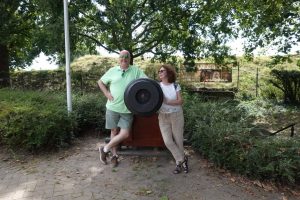 The town of
The town of 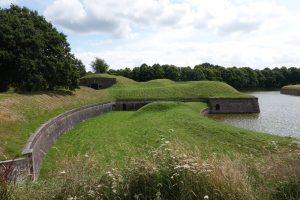 The current star shape of Naarden dates back to the 17th Century, when the fortifications were improved after the siege of 1673. Naarden was part of the New Dutch Waterline, a defensive line through the Netherlands which I’d never heard of before. I would love to do a tour of these forts, they look stunning, but that will have to be another visit.
The current star shape of Naarden dates back to the 17th Century, when the fortifications were improved after the siege of 1673. Naarden was part of the New Dutch Waterline, a defensive line through the Netherlands which I’d never heard of before. I would love to do a tour of these forts, they look stunning, but that will have to be another visit.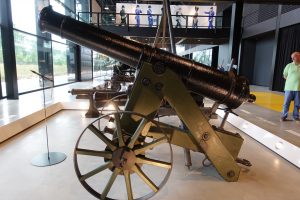 The National Military Museum is definitely a full day out. It is situated on the former air base at Soesterberg and apparently combines the collections of the former Military Aviation Museum in Soesterberg and Army Museum in Delft.
The National Military Museum is definitely a full day out. It is situated on the former air base at Soesterberg and apparently combines the collections of the former Military Aviation Museum in Soesterberg and Army Museum in Delft.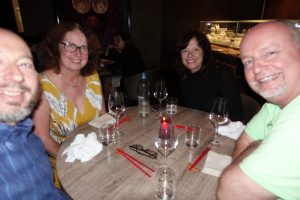 It wouldn’t feel right to end this first section of our trip without mentioning our evening out at the
It wouldn’t feel right to end this first section of our trip without mentioning our evening out at the 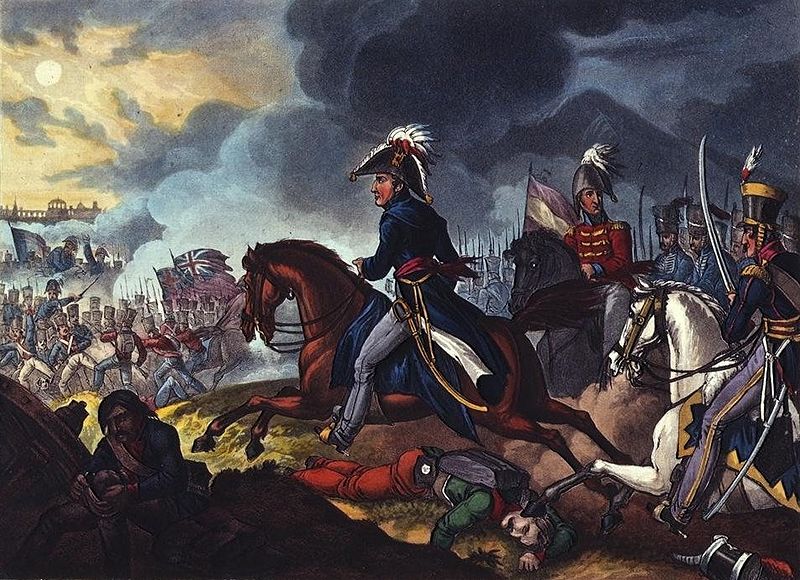
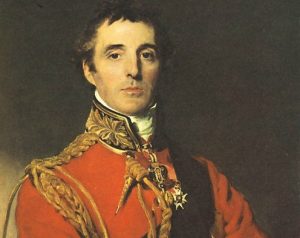 The Battle of Salamanca was fought on this day in 1812 across the rolling plains around the small Spanish village of Los Arapiles. In this excerpt from
The Battle of Salamanca was fought on this day in 1812 across the rolling plains around the small Spanish village of Los Arapiles. In this excerpt from  After a little more than a fortnight at Rueda, it was a relief to Paul to get his brigade moving. Night marches could be difficult, depending on the terrain, but most of his men were very experienced and followed each other through the darkness, relying on the voices of NCOs and officers to guide them. The clink of horses and the thudding of hooves followed the progress of the cavalry who were advancing with the light division. Paul rode up the long column to find General Charles Alten in conversation with his big German orderly. Peering through the darkness he recognised Paul and waved him forward.
After a little more than a fortnight at Rueda, it was a relief to Paul to get his brigade moving. Night marches could be difficult, depending on the terrain, but most of his men were very experienced and followed each other through the darkness, relying on the voices of NCOs and officers to guide them. The clink of horses and the thudding of hooves followed the progress of the cavalry who were advancing with the light division. Paul rode up the long column to find General Charles Alten in conversation with his big German orderly. Peering through the darkness he recognised Paul and waved him forward. We visited the battlefield during our tour of Portugal and Spain in 2017. The Salamanca battlefield site is immense; not in actual size since it probably isn’t the widest battlefield Wellington fought over, but in the sheer amount of information available. I was
We visited the battlefield during our tour of Portugal and Spain in 2017. The Salamanca battlefield site is immense; not in actual size since it probably isn’t the widest battlefield Wellington fought over, but in the sheer amount of information available. I was 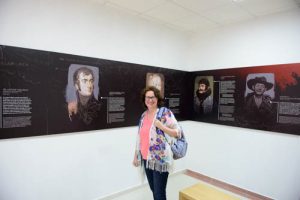 I was so glad we did. This is definitely the best small museum we visited. For one thing, everything is in both Spanish and English which wasmuch more useful than our desperate attempts to translate interpretation boards in other places. For another, it is amazingly detailed and accurate. From the advantages and disadvantages of the different infantry formations of line, square and column, to the best way to load a musket, somebody here had done their research and very well.
I was so glad we did. This is definitely the best small museum we visited. For one thing, everything is in both Spanish and English which wasmuch more useful than our desperate attempts to translate interpretation boards in other places. For another, it is amazingly detailed and accurate. From the advantages and disadvantages of the different infantry formations of line, square and column, to the best way to load a musket, somebody here had done their research and very well. 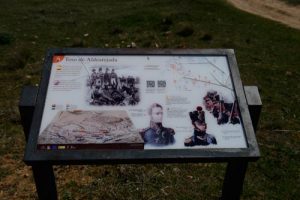 With the help of the museum, the interpretation boards, which are excellent, my trusty battlefield guide and a map, the Battle of Salamanca became suddenly very clear to me. Driving from board to board and then climbing hills and rocky outcrops to view the various vantage points of the battle it was very easy to visualise how Wellington was able to split the French line and send their army fleeing within a few hours.
With the help of the museum, the interpretation boards, which are excellent, my trusty battlefield guide and a map, the Battle of Salamanca became suddenly very clear to me. Driving from board to board and then climbing hills and rocky outcrops to view the various vantage points of the battle it was very easy to visualise how Wellington was able to split the French line and send their army fleeing within a few hours.
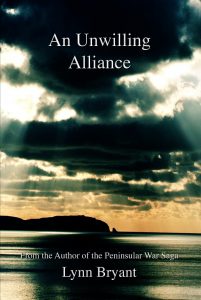
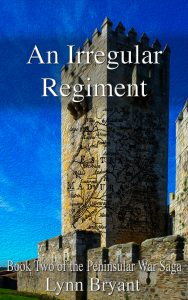
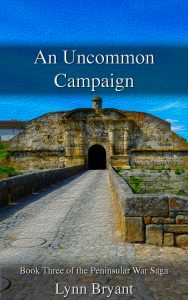
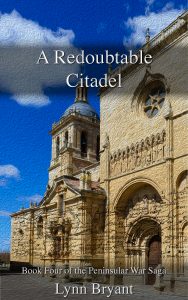
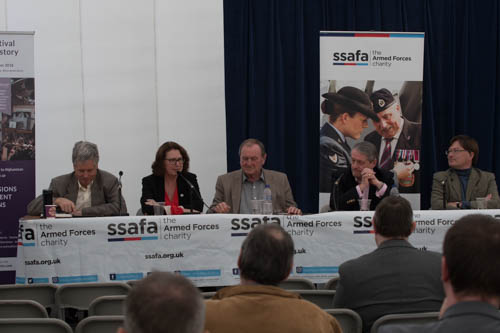
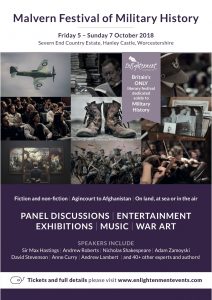 I have just got back from a great weekend at the Malvern Festival of Military History. It was a fantastic event, featuring a wide selection of historians, novelists and enthusiasts and I highly recommend it to anybody interested in the field who didn’t make it this year. I met some amazing people and have come away with some good memories and a whole host of new ideas which I am never going to have time to write. I also spent a small fortune on books…
I have just got back from a great weekend at the Malvern Festival of Military History. It was a fantastic event, featuring a wide selection of historians, novelists and enthusiasts and I highly recommend it to anybody interested in the field who didn’t make it this year. I met some amazing people and have come away with some good memories and a whole host of new ideas which I am never going to have time to write. I also spent a small fortune on books…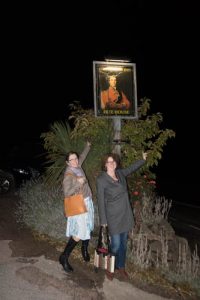
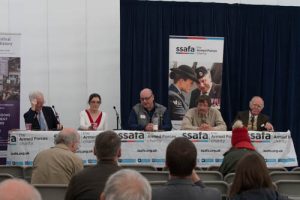
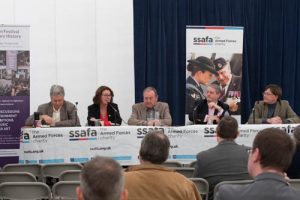
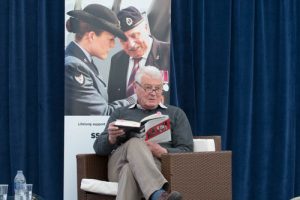
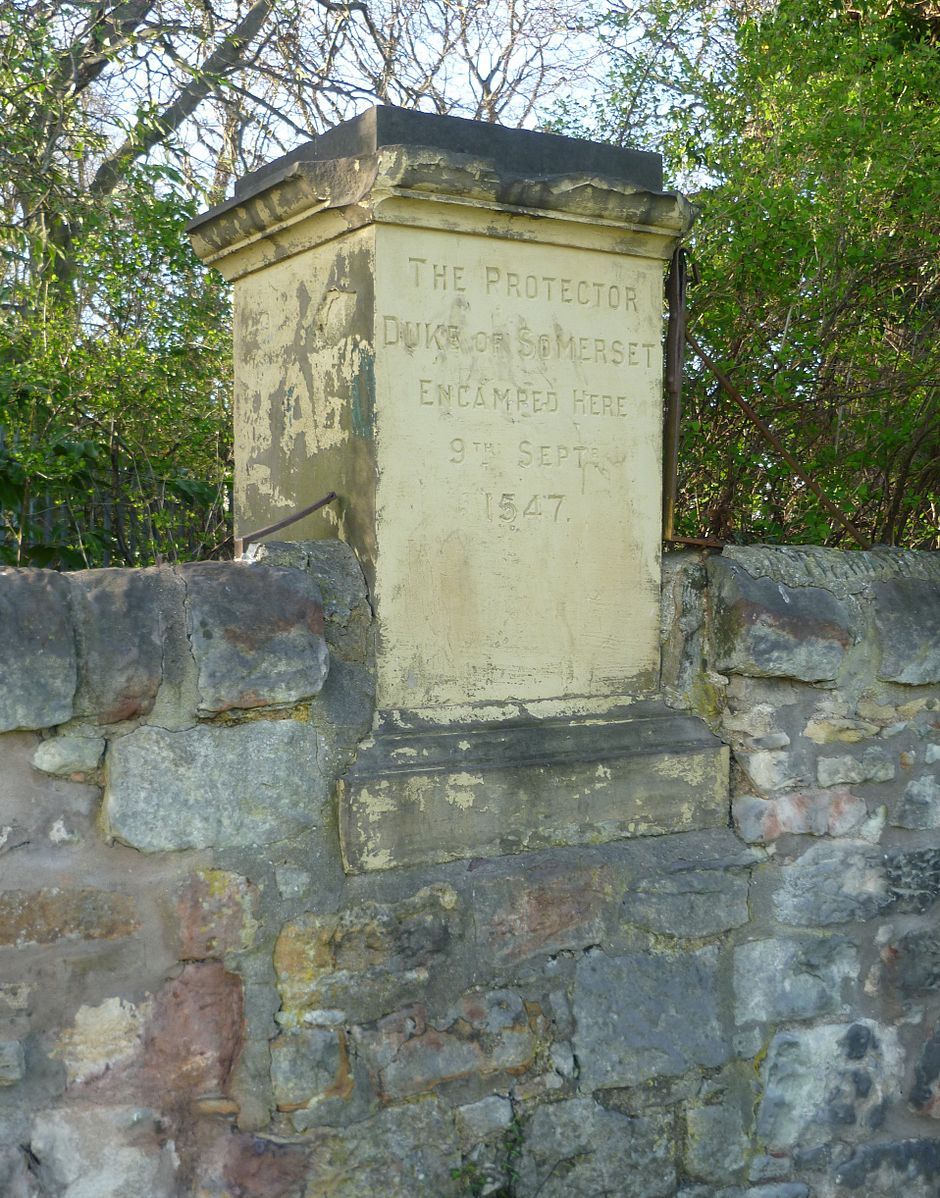
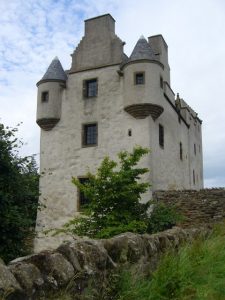
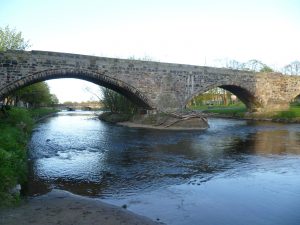
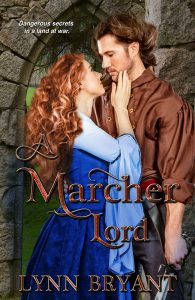
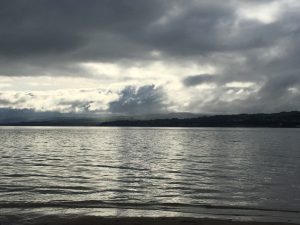 I’m currently on a week long trip to Northern Ireland: a place of contrasts which leaves the traveller in me overwhelmed by the beauty of the landscape and the historian in me with her head spinning. After only a few days it’s clear to me how appallingly difficult it must be for any historian writing about the turbulent past of this area to find a balance between the stories of the past and the ongoing narrative of the present.
I’m currently on a week long trip to Northern Ireland: a place of contrasts which leaves the traveller in me overwhelmed by the beauty of the landscape and the historian in me with her head spinning. After only a few days it’s clear to me how appallingly difficult it must be for any historian writing about the turbulent past of this area to find a balance between the stories of the past and the ongoing narrative of the present.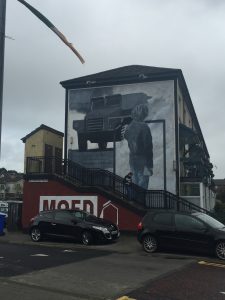 This trip has changed that for me. Spending time in Belfast and Derry, reading accounts of the confusing relationships between the English, the Scots and the Irish of all persuasions has reminded me that through the centuries this has been so much more than the simplistic explanation of conflict between Protestants and Catholics which was what I remember being told as a child, watching the violence explode across the evening news week after week through the seventies. IRA bombings were a reality of life, coming close to home on more than one occasion, and all I can remember back then was a sense of anger at feeling under threat over a cause that I did not understand and felt was none of my business.
This trip has changed that for me. Spending time in Belfast and Derry, reading accounts of the confusing relationships between the English, the Scots and the Irish of all persuasions has reminded me that through the centuries this has been so much more than the simplistic explanation of conflict between Protestants and Catholics which was what I remember being told as a child, watching the violence explode across the evening news week after week through the seventies. IRA bombings were a reality of life, coming close to home on more than one occasion, and all I can remember back then was a sense of anger at feeling under threat over a cause that I did not understand and felt was none of my business.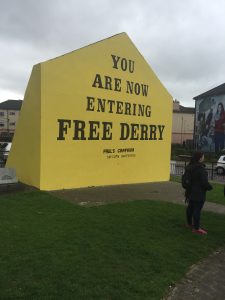 Yesterday we went for a trip to Derry / Londonderry and visited the
Yesterday we went for a trip to Derry / Londonderry and visited the 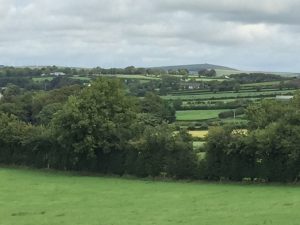 Alongside the historical complexity of this region is the stunning beauty of the scenery and that can be appreciated without needing to understand any more. Coming from the Isle of Man, I consider myself a connoisseur of fabulous coastlines and this one is definitely up there with the best. Travelling back on the Lough Foyle ferry yesterday evening into Magilligan was magical.
Alongside the historical complexity of this region is the stunning beauty of the scenery and that can be appreciated without needing to understand any more. Coming from the Isle of Man, I consider myself a connoisseur of fabulous coastlines and this one is definitely up there with the best. Travelling back on the Lough Foyle ferry yesterday evening into Magilligan was magical.